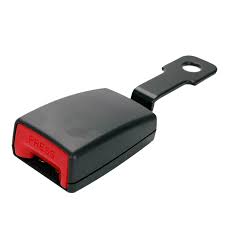Description :
A used car seatbelt is a crucial safety device designed to protect occupants in a vehicle by restraining their movements during sudden stops, collisions, or accidents. The primary purpose of a seatbelt is to prevent occupants from being ejected from the vehicle, reduce the risk of injury, and help distribute the forces of a collision across stronger parts of the body.
Here is a more detailed description of a used car seatbelt:
1. *Material and Construction:*
- Seatbelts are typically made from strong, durable materials such as nylon or polyester.
- The belt is threaded through a series of metal or plastic components, including a buckle and a latch plate.
2. *Components:*
- *Buckle:* The used buckle is the part of the seatbelt that fastens and secures the belt in place. It is usually mounted on the seat or the vehicle's frame.
- *Latch Plate:* The used latch plate is the flat metal or plastic piece at the end of the seatbelt that clicks into the buckle to secure the belt.
- *Retractor Mechanism:* Modern seatbelts are equipped with retractors that allow the belt to be pulled out and retract smoothly. There are both emergency locking retractors (ELR) and automatic locking retractors (ALR) in different seatbelt systems.
3. *Types of Seatbelts:*
- *Three-Point Seatbelt:* This is the most common type, featuring a single belt that goes over the occupant's shoulder and across the lap.
- *Lap Belt:* An older design, consisting of a single strap that goes across the occupant's lap. This type is less effective than three-point seatbelts.
- *Five-Point Harness:* Often used in racing cars, it includes two shoulder belts, two lap belts, and a fifth strap between the legs, forming a secure harness.
4. *Functionality:*
- Seatbelts work on the principle of controlled deceleration during a collision, preventing the occupants from moving too rapidly and sustaining severe injuries.
- The seatbelt webbing is designed to stretch slightly to absorb energy during a crash.
5. *Safety Standards:*
- Seatbelts are subject to rigorous safety standards to ensure their effectiveness in various crash scenarios.
- Many countries have laws mandating the use of seatbelts, and failure to wear one can result in fines or penalties.
6. *Reminder Systems:*
- Some modern vehicles are equipped with seatbelt reminder systems that alert occupants if they haven't fastened their seatbelts.
Wearing a seatbelt is a fundamental practice for all vehicle occupants, as it significantly contributes to reducing the risk of serious injury or death in the event of a collision.


